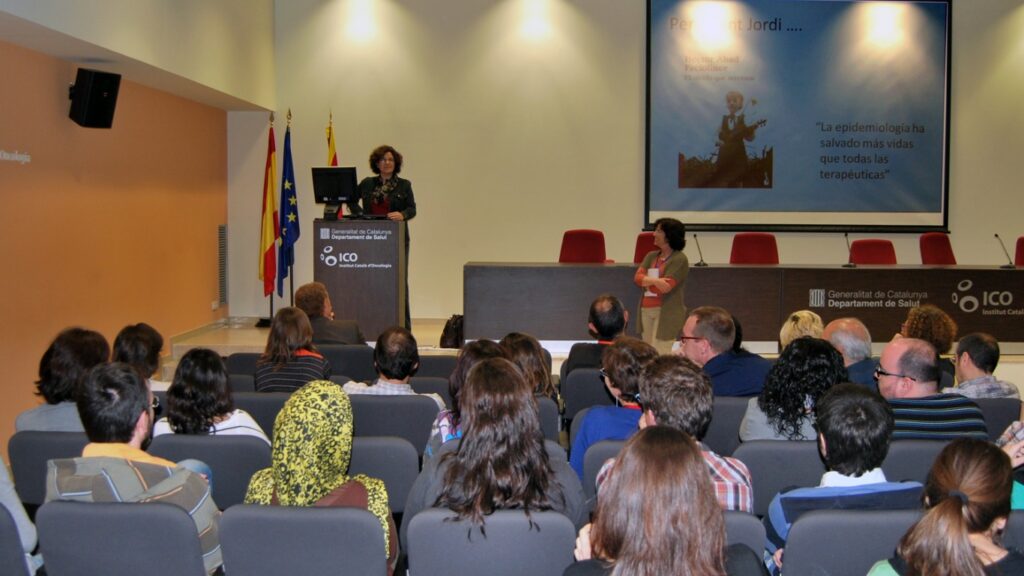The integration of different levels of information associated with a disease, such as issues related to environmental exposure, epigenetics, genetics, genomics, metabolomics, transcriptomics and proteomics, requires the development of innovative designs and new methodological tools. The head of the research group on Molecular Epidemiology and Genetics at the Spanish National Cancer Research Centre (CNIO), Núria Malats, gave a lecture on the challenges of epidemiology on April 20 in Pau Viladiu Hall, at the Duran i Reynals Hospital (ICO) within IDIBELL seminars series. The talk had an evocative title: “epidemiology and omics: will the leaves hide the forest?”.
Dr. Malats studies the factors that influence the onset and progression of various diseases, especially bladder, pancreas and breast cancers. Environmental factors play a very important role in these pathologies, but also genetic predisposition of patients. During her lecture, Núria Malats focused mainly in bladder cancer, which has a very high incidence among the Spanish population. The researcher referred to EPICURO study, in which her group collaborate, which has allowed collecting data from more than 1,300 cases of 18 Spanish hospitals. This is a prospective study that has allowed monitoring of patients for over ten years and collecting lots of data using different techniques, which the researcher summarized by the term “omics” (genomics, metabolomics, transcriptomics, etc.).
Leaves hiding the forest
In recent years, there are been developed new technologies and new approaches of the diseases, which pose new challenges to epidemiology. Dr. Malats cites several of these challenges, including the identification of a large number of genetic alterations through new sequencing technologies, the evolution from a hypothesis-led approach to other exploratory or agnostic, the new concept of disease as a dynamic process, the need to consider intermediate results as gene expression or protein function and at the same time, consider the requirement of global phenomena to understand how individuals respond to a particular environmental conditions. All of these elements can become “leaves that end up hiding the forest.”
During the seminar, Núria Malats proposed to incorporate all these elements to develop a new model that integrates epidemiology and “omics”. In this model, the term “exposure” is replaced by “exposome” which is assessed by metabolomics and epigenomics techniques. The “disease” is called “phenomene” and is evaluated by techniques of genomics, transcriptomics and proteomics.

